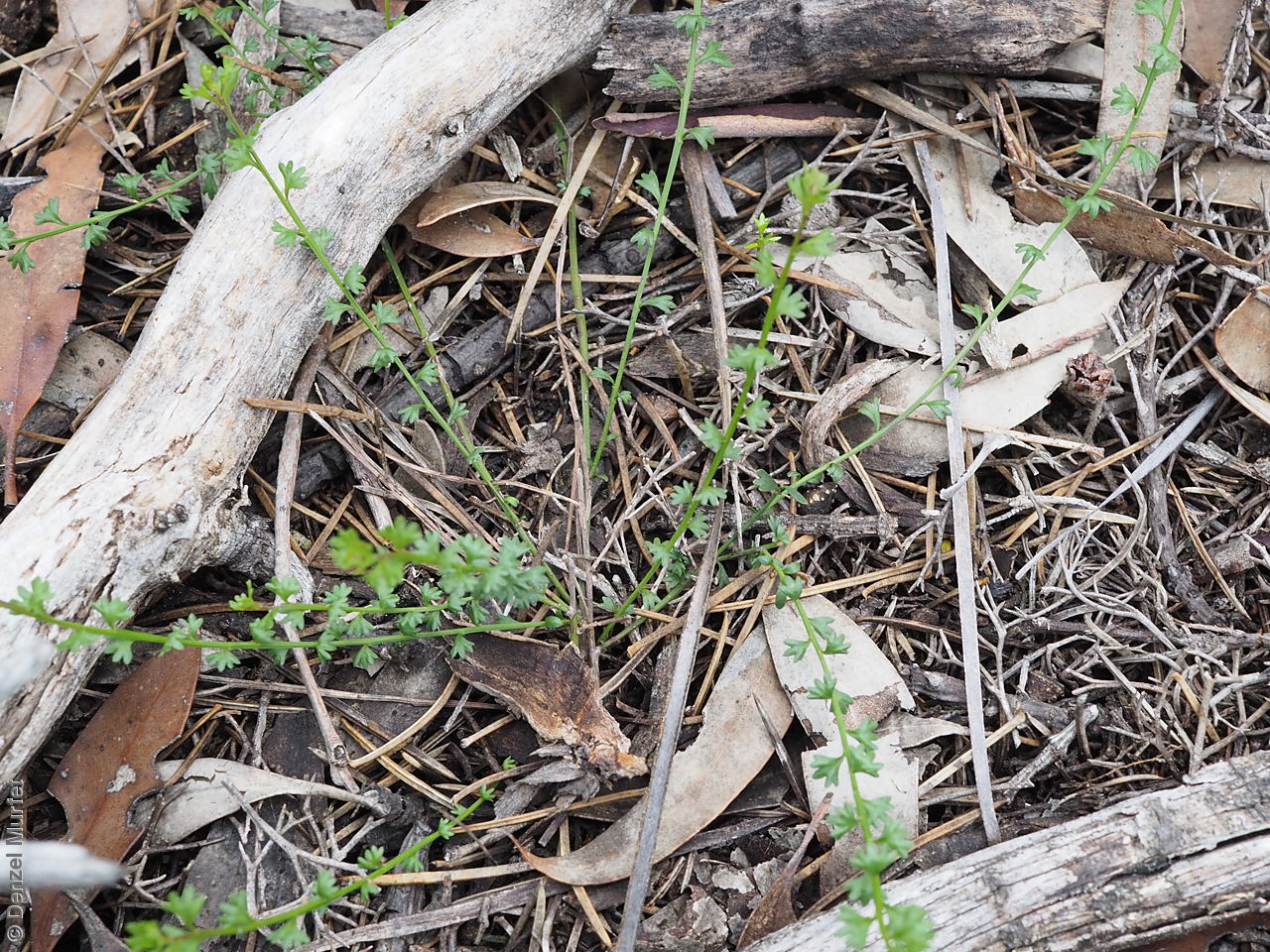
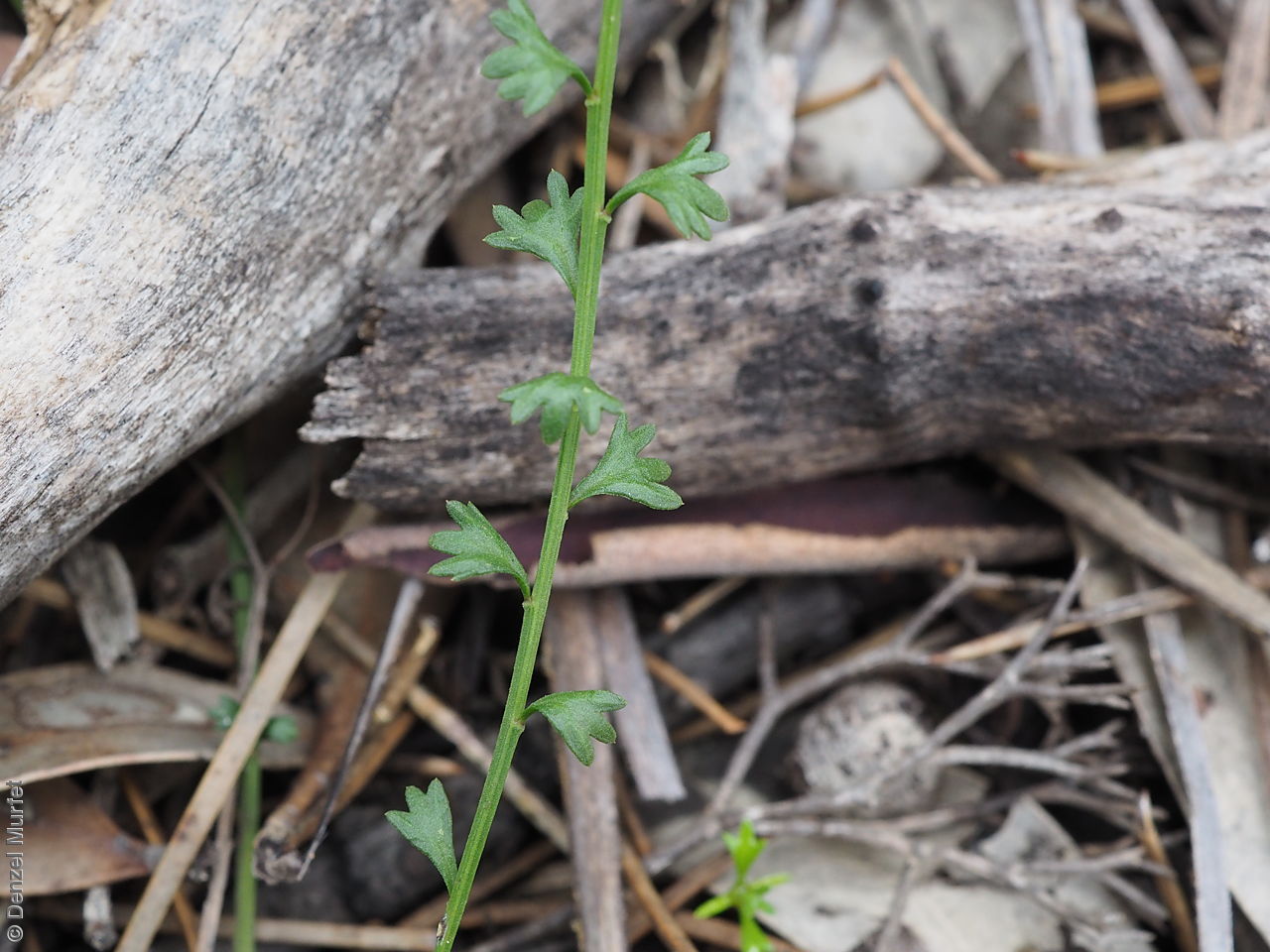
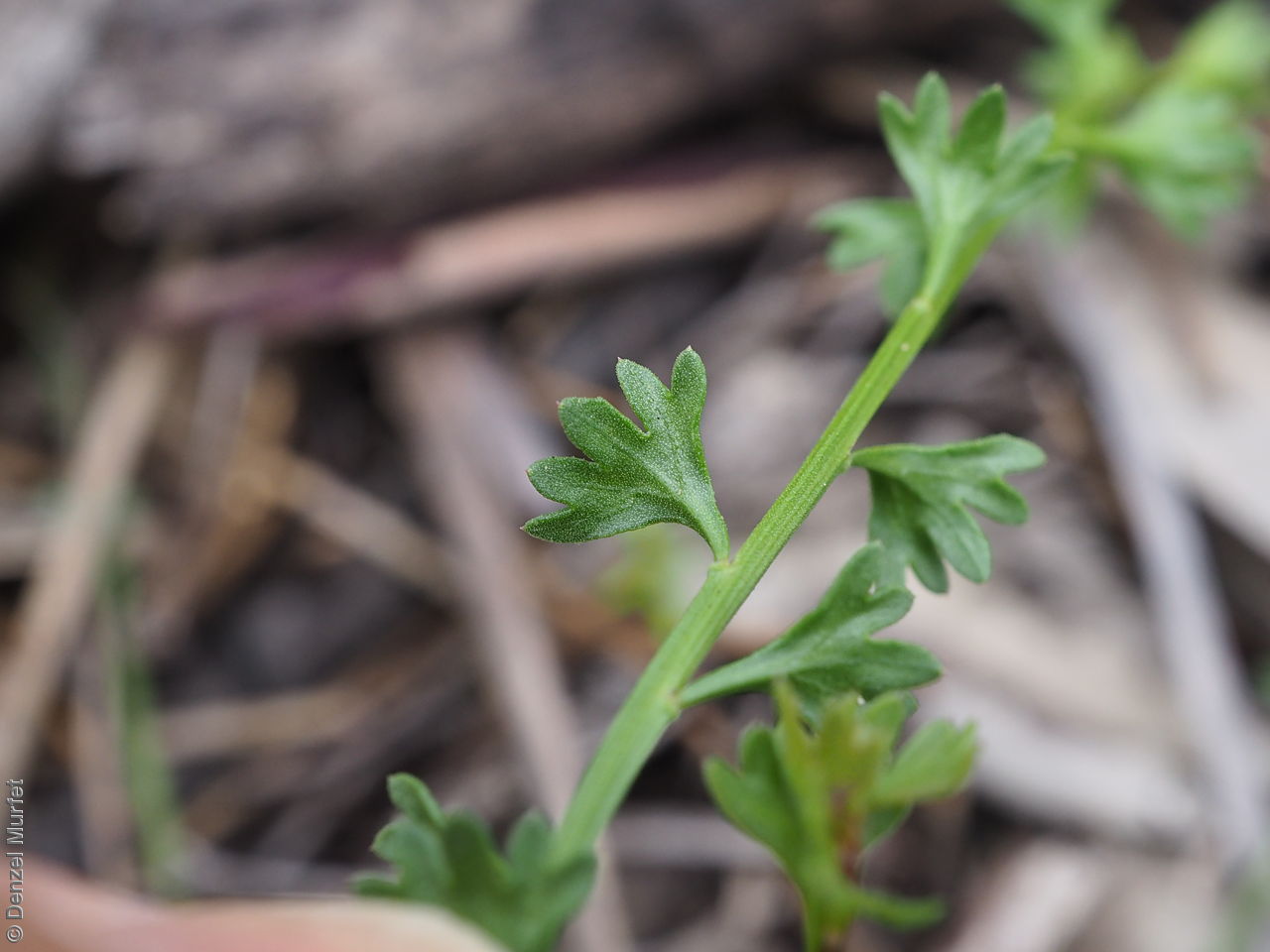
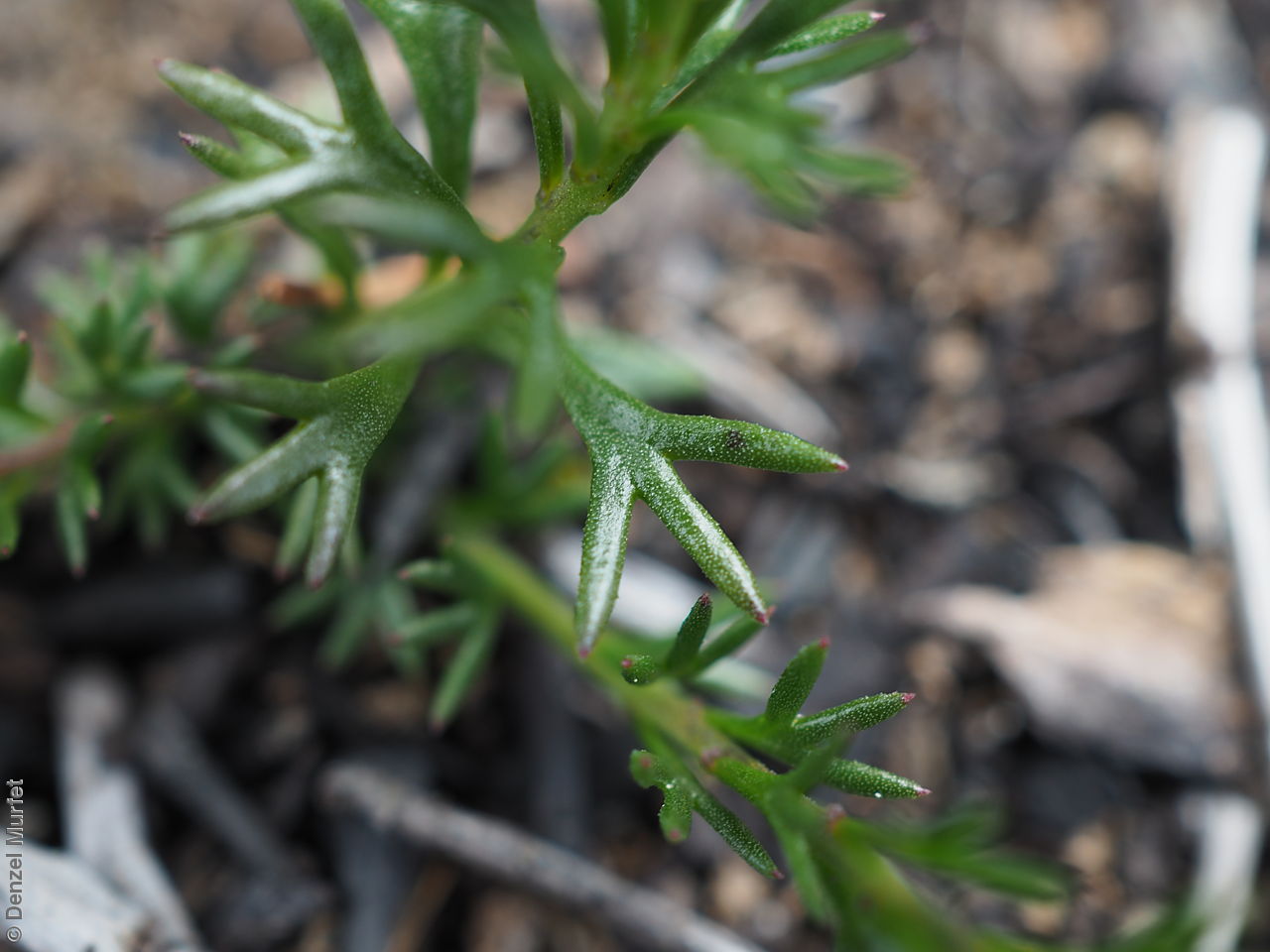
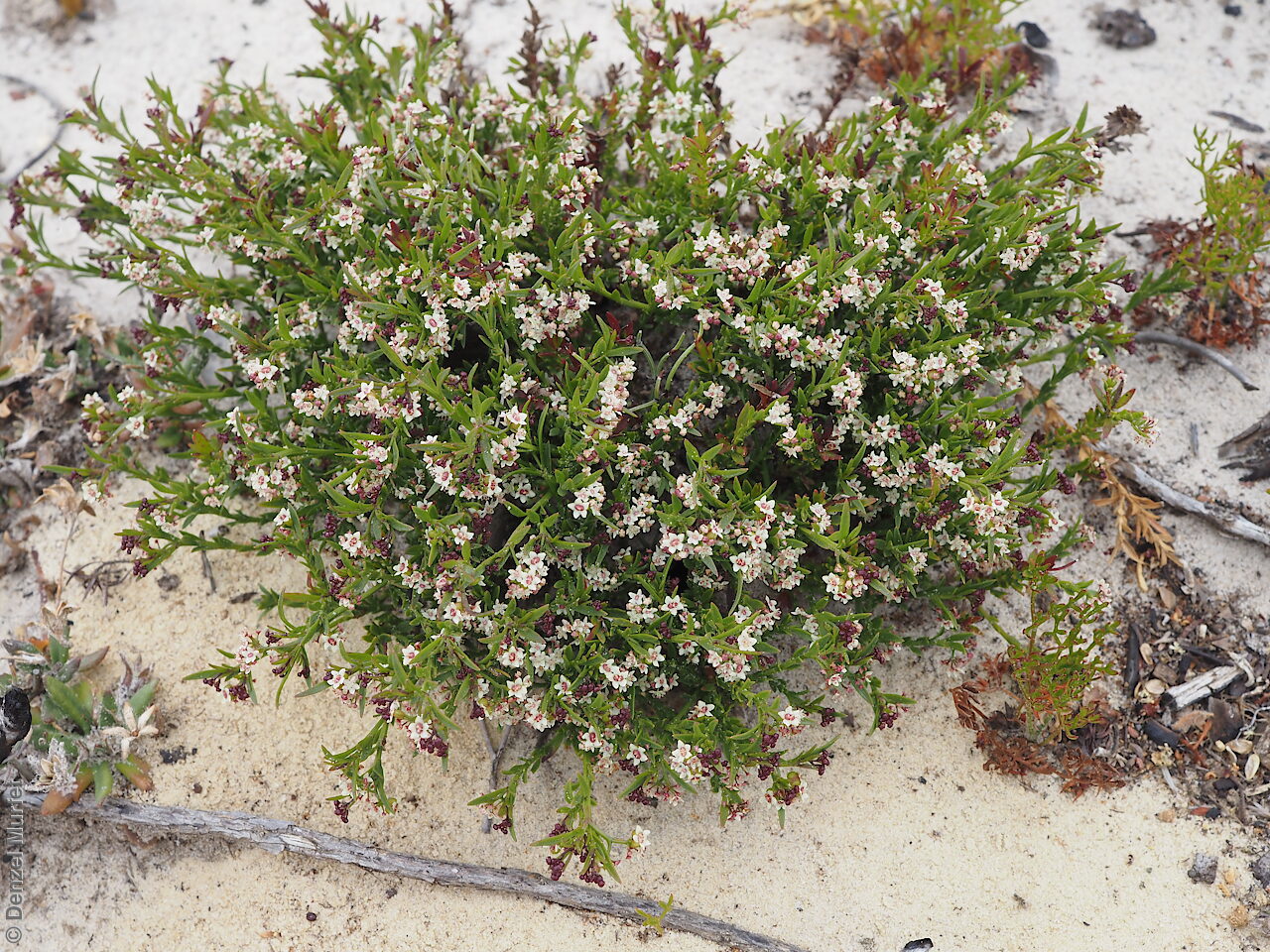
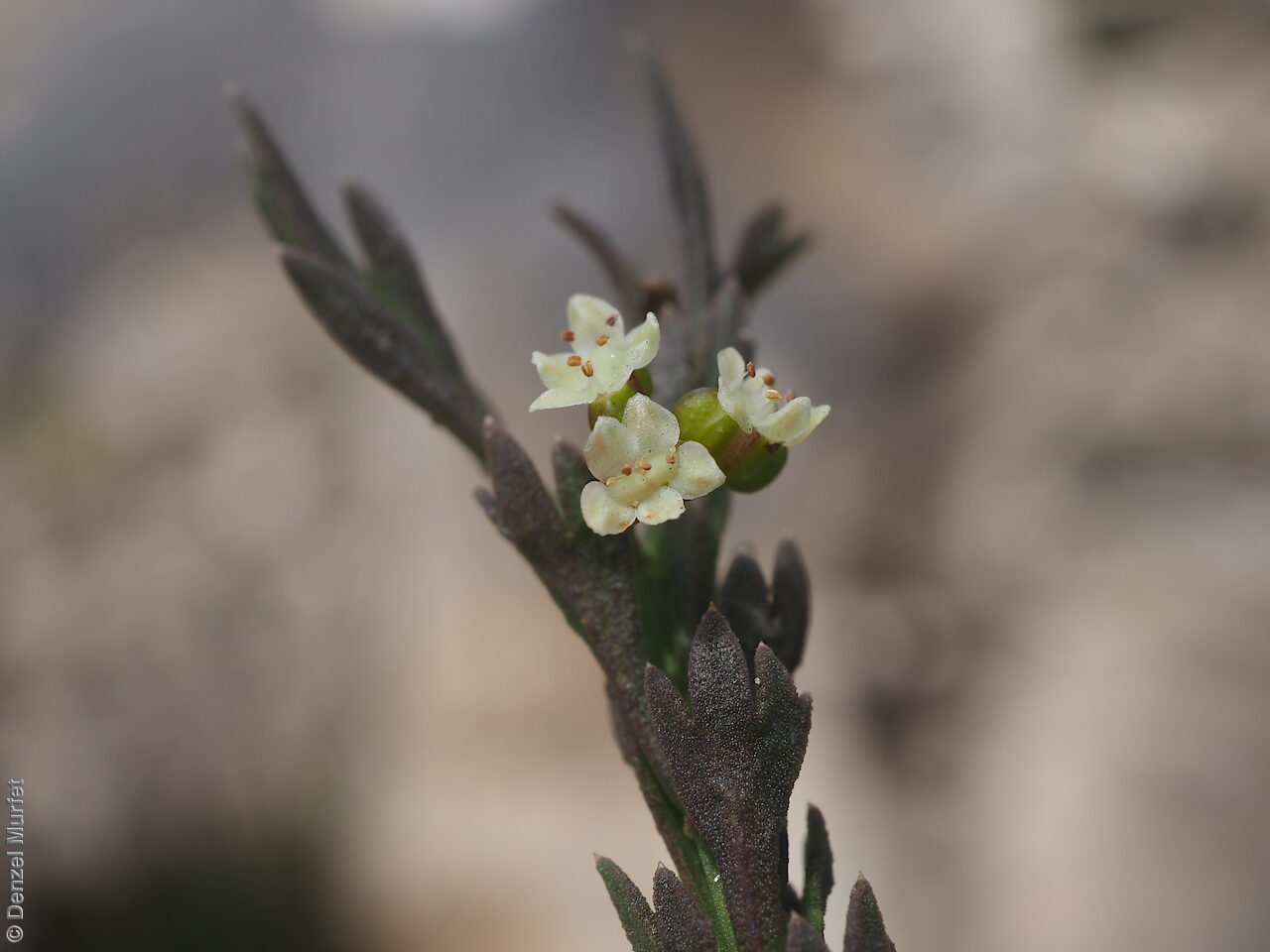
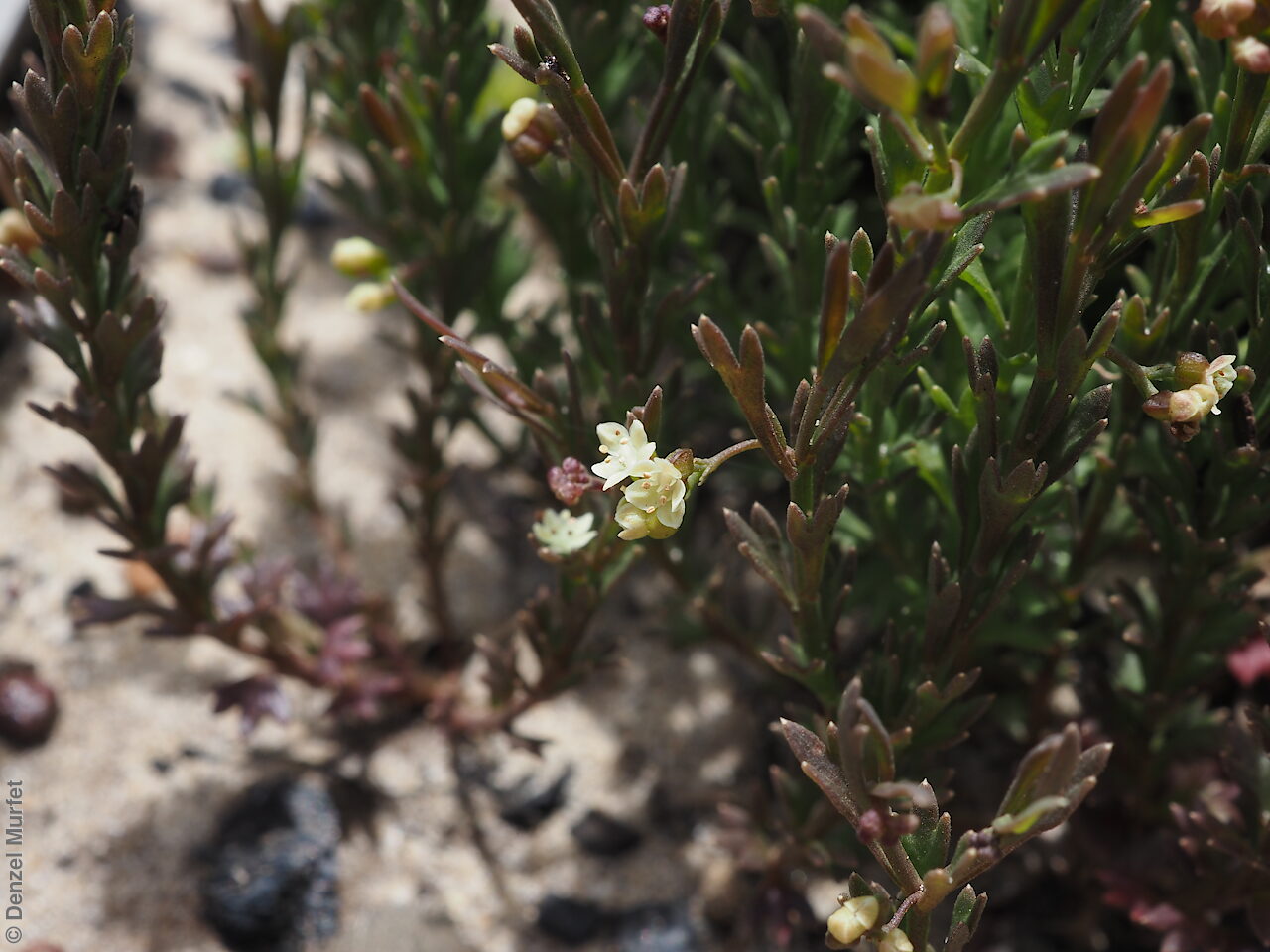
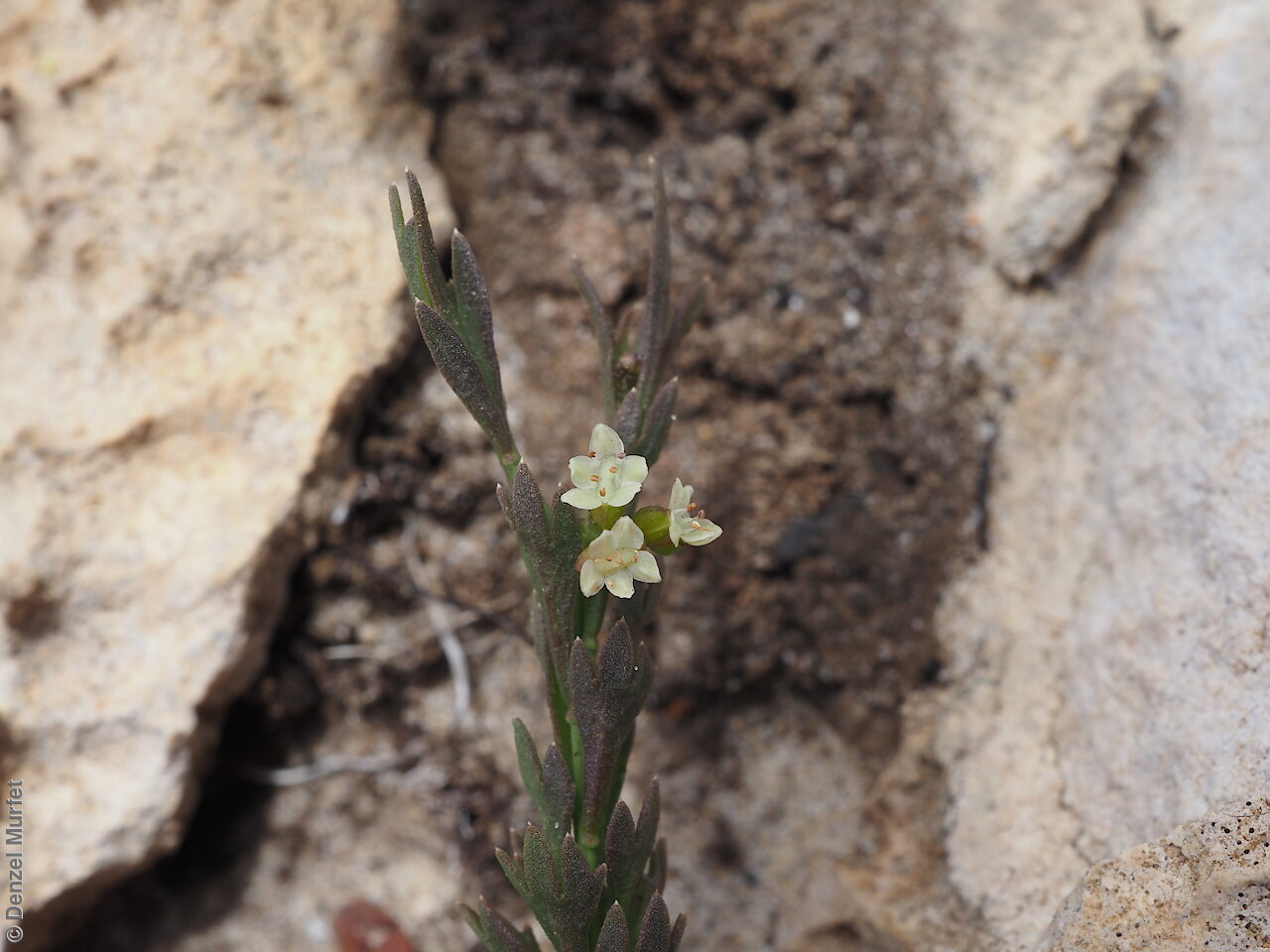
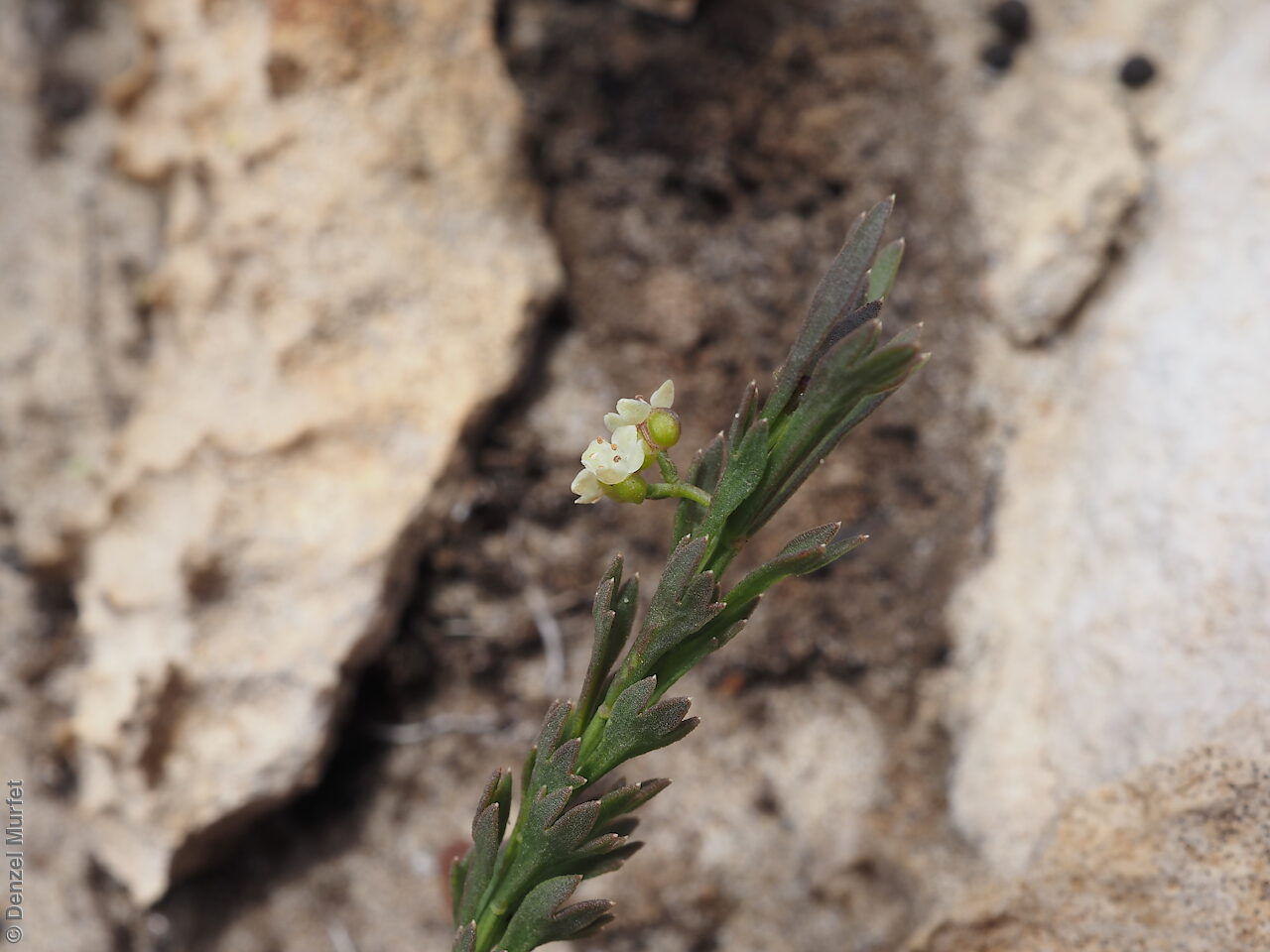
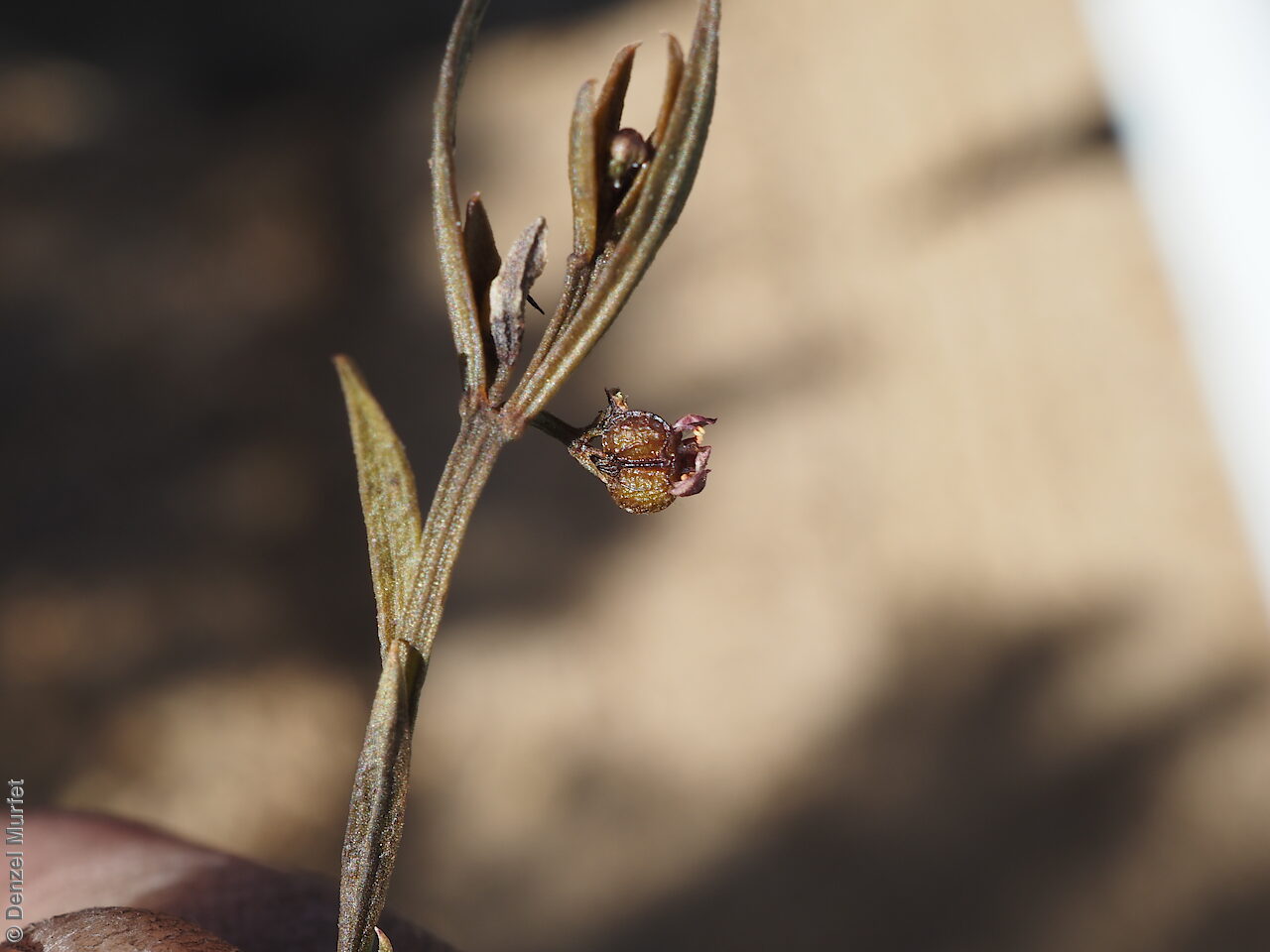
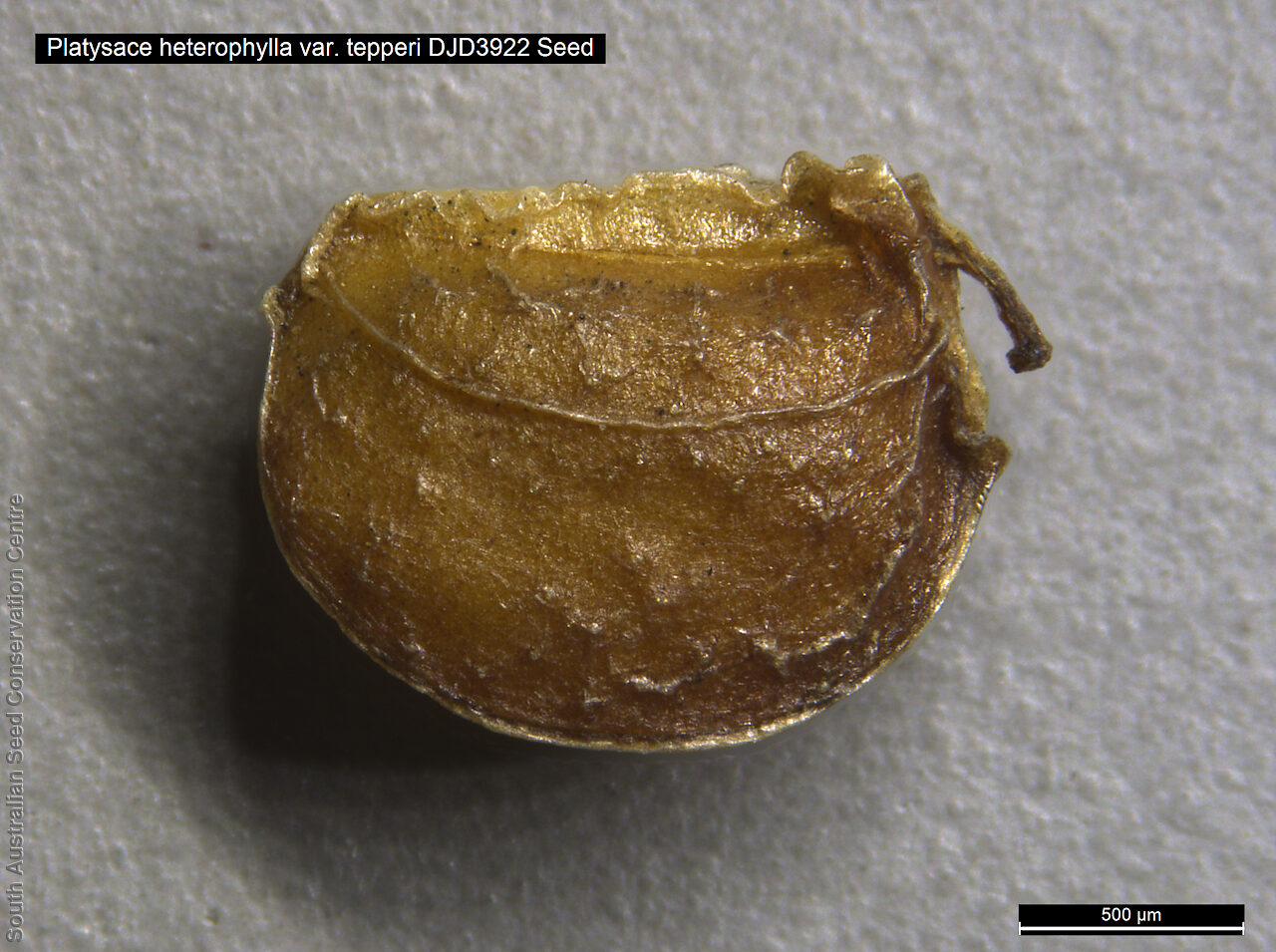
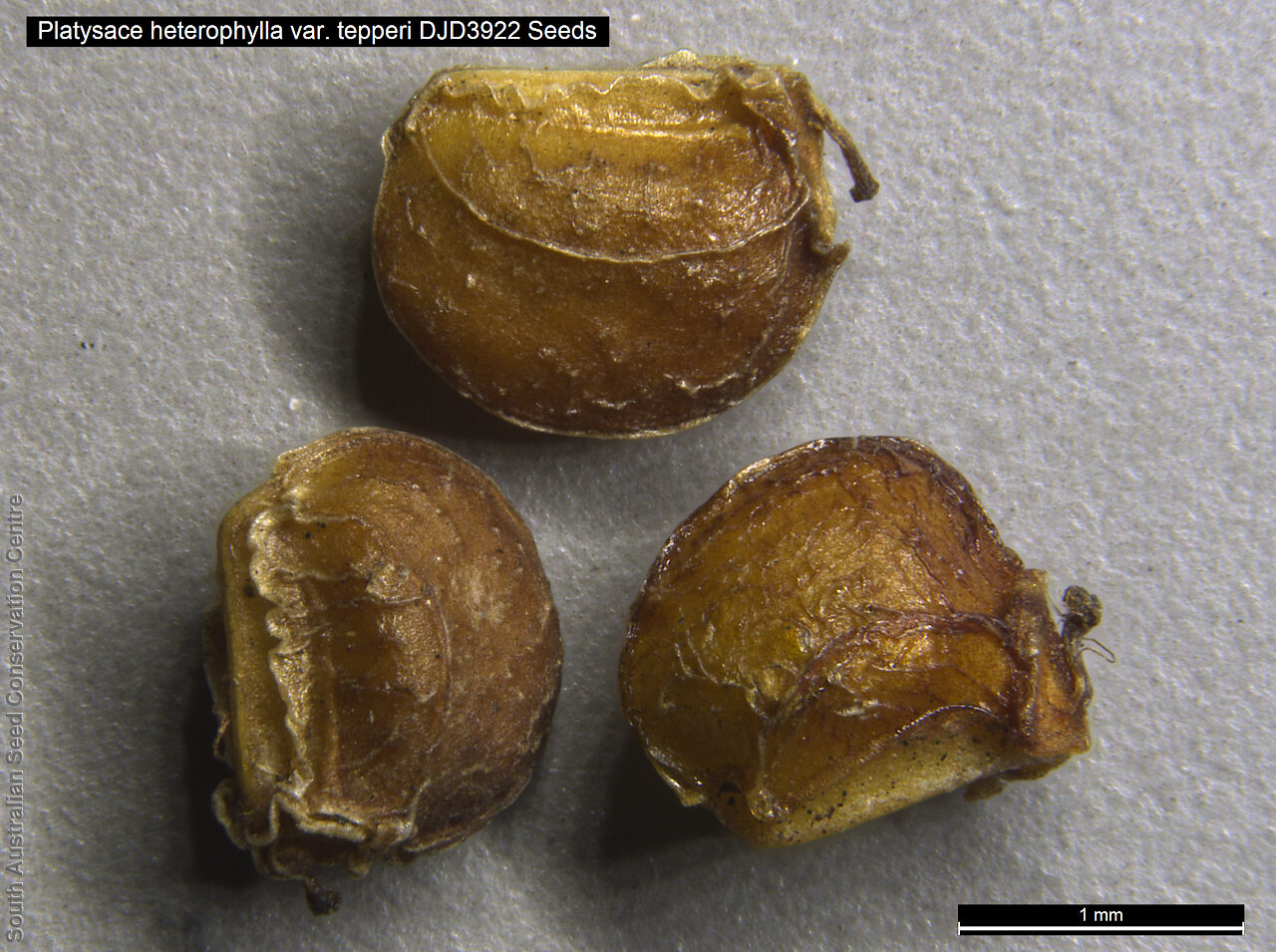
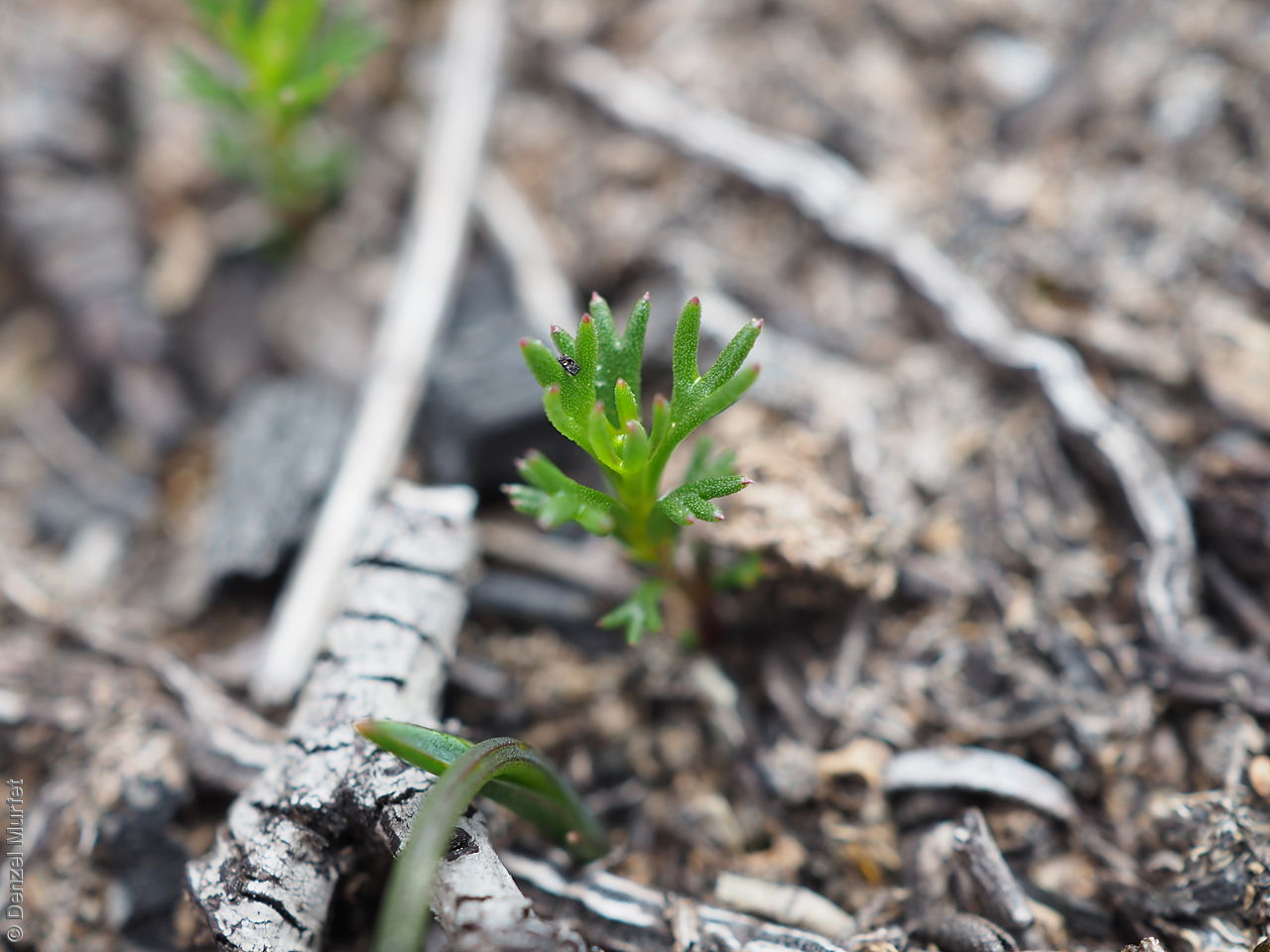
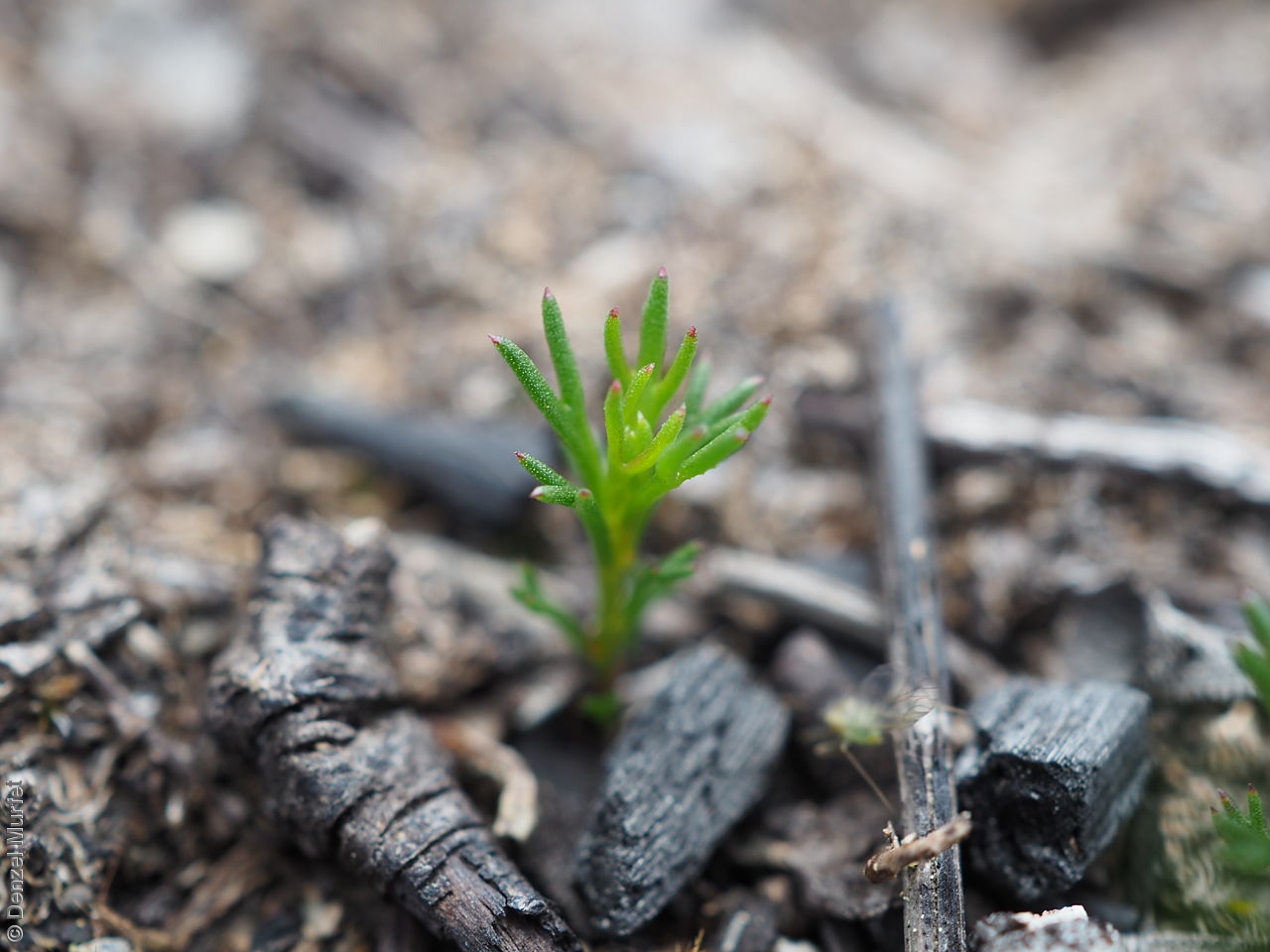

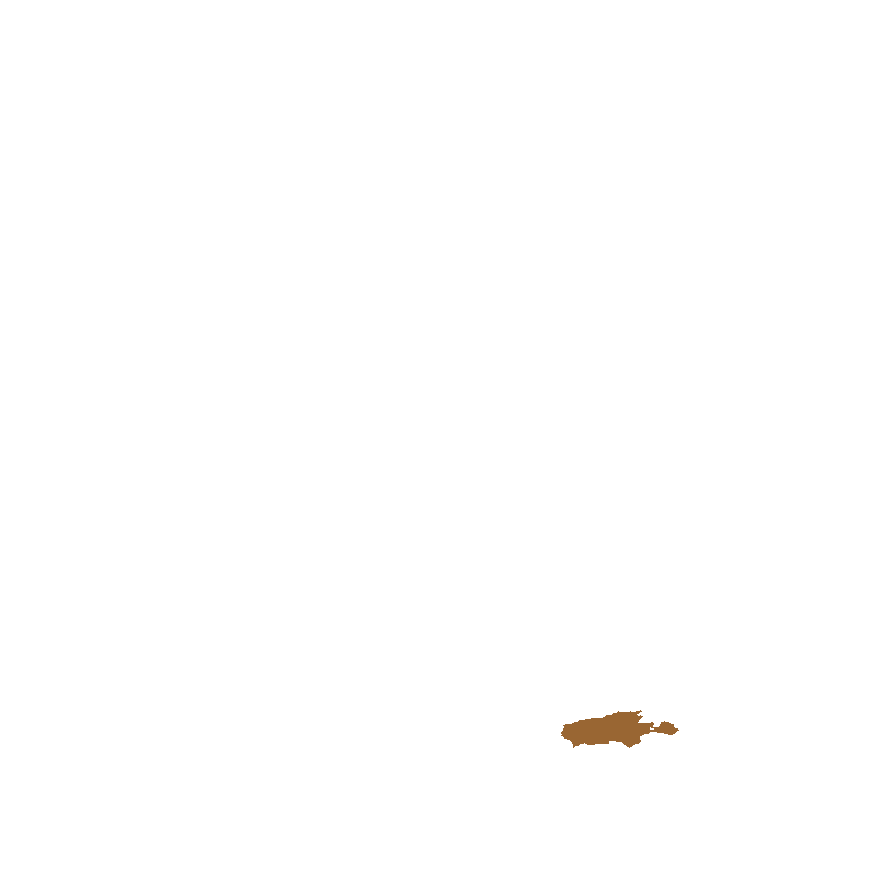
Prior names
Trachymene heterophylla var. tepperi
Common names
Lobed Platysace
Kangaroo Island Platysace
Etymology
Platysace from the Greek 'platys', meaning compressed or broad and 'sakos', meaning shield; alluding to the broad flat fruit. Heterophylla from the Greek 'heteros', meaning different and 'phyllon,' meaning leaf; referring to its variable leaf shape. Tepperi named after Johann Gottlieb Otto Tepper (1841 - 1923) who collected the type specimen from Kangaroo Island.
Distribution and status
Endemic to South Australia and found only on Kangaroo Island, growing in sandy soils in coastal heath. Native. Rare in South Australia.
Herbarium region: Kangaroo Island
NRM region: Kangaroo Island
AVH map: SA distribution map (external link)
Plant description
Glabrous perennial herb with slender stems to 30 cm long. Leaves cuneate to 10 mm long, most with acutely 3-lobed at the apex. Flowering at leaf axis in small umbels with few pale yellow flowers. Flowering between December to January. Fruit slightly laterally compressed, sparsely tuberculate. Mericarps almost ovoid. Seed embryo type is linear underdeveloped.
Seed collection and propagation
Collect seeds between February to March. Collect mature capsules, those that are fat, hard and turning pale brown. Place the capsules in a tray and leave to dry for one to two weeks. Then rub the capsules gently by hand to dislodge the seeds. Use a sieve to separate the unwanted material. Store the seeds with a desiccant such as dried silica beads or dry rice, in an air tight container in a cool and dry place.
Fire Response
Obligate re-sprouter and re-seeder, only tiny seedlings noted emerging in fire scars.
Longevity: ?? years
Time to flowering: ??? years
Recovery Work
In 2020-2021 this species was assessed post-fire in 1 year and 2 year old fire scars. Further populations will be assessed and seeds collected on Kangaroo Island in 2021–2022. Germination screening testing the response to fire cues will be undertaken in 2021.This project was supported by the Project Phoenix program.
| Location | No. of seeds (weight grams) | Number of plants | Date collected | Collection number Collection location | Date stored | % Viability | Storage temperature |
|---|---|---|---|---|---|---|---|
| BGA | 8,900 (3.400 g) | 100+ | 10-Jun-2021 | DJD3922 Kangaroo Island | 20-Jun-2023 | 10% | -18°C |
Number of plants: This is the number of plants from which the seeds were collected.
Collection location: The Herbarium of South Australia's region name.
% Viability: Percentage of filled healthy seeds determined by a cut test or x-ray.